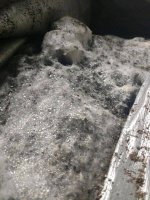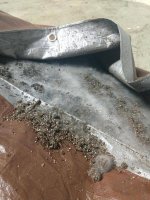Alright guys, have followed here on IC for years, just never posted. Am a fan of several organic and no-till mixes. Clackamas, Subcool, The Rev, etc. All good info IMO.
I've had a fair amount of success in both organic indoor and outdoor, but have thrown together a new batch that is currently composting, for the next couple weeks, then will be CEC, NPK, PH tested, and if all tests are good, will be throwing several ladies in it to see how they do.
The Vegging blend we do is very similar, except reduced amounts and differences in certain inputs, all inputs are sourced organic. I also tend to blend what I consider a little "lighter" than what some others would say and have had very good results.
This is for a cubic yard of soil.
Base:
1/3 Sphagnum Peat
1/3 Perlite
1/6 (120lbs) EarthWorm Castings
1/6 (120lbs) Composted Hardwood Material
5lbs 6-Row Malted Barley Flour
2lbs Insect Frass
2lbs Azomite
1.5lbs Oyster Shell Flour
1/2lb Powdered Dolomite Lime
2lbs Diatomite Powder
3lbs Hydrolyzed Feather Meal
2lbs Alfalfa Meal
2lbs Neem Seed Meal
4lbs Crab Shell Meal
3lbs Aerobically Composted Poultry Manure
5lbs Fish Bone Meal
2lbs High P Seabird Guano
5lbs Greensand
5lbs Kelp Meal
2lbs Langbeinite
I also do add both a bacterial inoculant to jumpstart the composting process as well as adding some biofungicide properties to the soil. I also add mycorrhizae to the soil, but this happens after the cooking is done and I'm ready to plant, also I inoculate the root ball.
Want thoughts and opinions here... any pointers or questions definitely welcome. Always looking to learn and gain knowledge.
Thanks!
Nutrients:
I've had a fair amount of success in both organic indoor and outdoor, but have thrown together a new batch that is currently composting, for the next couple weeks, then will be CEC, NPK, PH tested, and if all tests are good, will be throwing several ladies in it to see how they do.
The Vegging blend we do is very similar, except reduced amounts and differences in certain inputs, all inputs are sourced organic. I also tend to blend what I consider a little "lighter" than what some others would say and have had very good results.
This is for a cubic yard of soil.
Base:
1/3 Sphagnum Peat
1/3 Perlite
1/6 (120lbs) EarthWorm Castings
1/6 (120lbs) Composted Hardwood Material
5lbs 6-Row Malted Barley Flour
2lbs Insect Frass
2lbs Azomite
1.5lbs Oyster Shell Flour
1/2lb Powdered Dolomite Lime
2lbs Diatomite Powder
3lbs Hydrolyzed Feather Meal
2lbs Alfalfa Meal
2lbs Neem Seed Meal
4lbs Crab Shell Meal
3lbs Aerobically Composted Poultry Manure
5lbs Fish Bone Meal
2lbs High P Seabird Guano
5lbs Greensand
5lbs Kelp Meal
2lbs Langbeinite
I also do add both a bacterial inoculant to jumpstart the composting process as well as adding some biofungicide properties to the soil. I also add mycorrhizae to the soil, but this happens after the cooking is done and I'm ready to plant, also I inoculate the root ball.
Want thoughts and opinions here... any pointers or questions definitely welcome. Always looking to learn and gain knowledge.
Thanks!
Nutrients:







